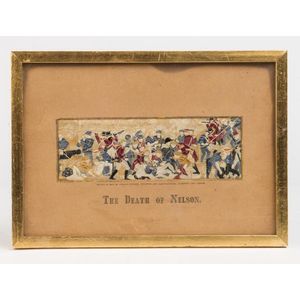Dutch Coastal Scenes & Gents on Delft Blue Tiles
You must be a subscriber, and be logged in to view price and dealer details.
Subscribe Now to view actual auction price for this item
When you subscribe, you have the option of setting the currency in which to display prices to $Au, $US, $NZ or Stg.
- Oak - Native to Europe and England, oak has been used for joinery, furniture and building since the beginning of the medieval civilisation. It is a pale yellow in colour when freshly cut and darkens with age to a mid brown colour.
Oak as a furniture timber was superceded by walnut in the 17th century, and in the 18th century by mahogany,
Semi-fossilised bog oak is black in colour, and is found in peat bogs where the trees have fallen and been preserved from decay by the bog. It is used for jewellery and small carved trinkets.
Pollard oak is taken from an oak that has been regularly pollarded, that is the upper branches have been removed at the top of the trunk, result that new branches would appear, and over time the top would become ball-like. . When harvested and sawn, the timber displays a continuous surface of knotty circles. The timber was scarce and expensive and was used in more expensive pieces of furniture in the Regency and Victorian periods. - Crazing - A network of fine cracks in the glaze of a ceramic item, caused by uneven shrinking during the firing process.
- Fleur-De-Lis - The fleur-de-lis is a stylized lily or iris flower with
three petals that has been used as a decorative motif for thousands of years. It
often appears in Christian iconography symbolising the Holy Trinity and as an
emblem that reflects the purity of the Virgin Mary. In decorative art and antiques
decoration, the fleur-de-lis is often used as a symbol of elegance, refinement,
and good taste.
The fleur-de-lis has a rich history and in ancient times, it
was associated with royalty, purity, and the divine, and it was used as a
symbol of the French monarchy for many centuries.
It is a common design element in ceramics, silverware, jewellery,
furniture, and other decorative objects, and it can be found in many different
styles and forms.
This item has been included into following indexes:
Visually similar items

A Stevengraph 'The Death of Nelson', framed & glazed, overall 26 x 19 cm.

A Japanese woodblock print by Keisai Eisen (1790-1848) depicting a woman in traditional dress. Oban size, 24 x 36 cm.

1901 Federation Ceremonies: Collection with invitations (3) - Inaugural Celebrations Sydney, Swearing of Governor-General Earl of Hopetoun & Pyrotechnical Illumination of Sydney Harbour; 'Inaugural Celebrations at Sydney, Official Programme'; photos (5) of

A Japanese woodblock print of a winter scene. Height 22 cm. Width 31 cm
